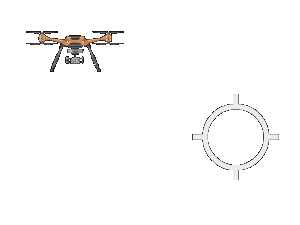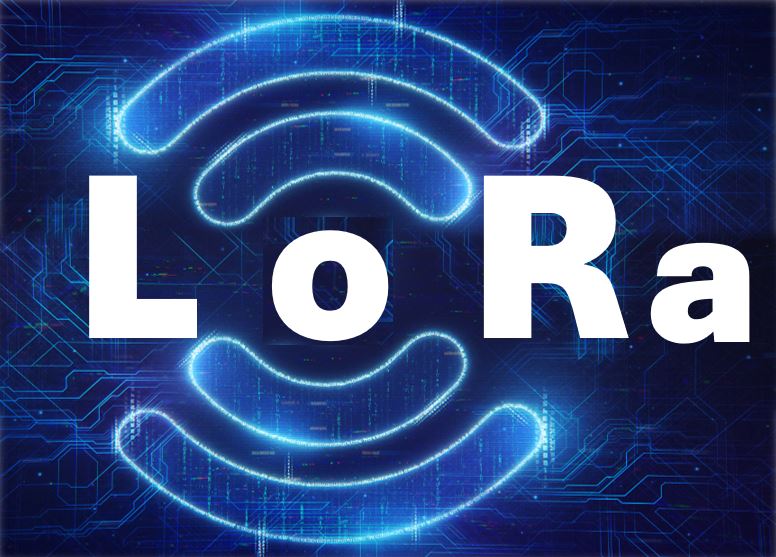In an era of rapid technological growth, communication capabilities are also being developed and changed. LoRa protocol is considered one of the newest wireless communication techniques, and in recent years, its use has become widely spread.
Along with technological advancement and the improvement of abilities in the electromagnetic field, the capability of terrorist organizations has also improved. Improvised explosive devices pose a massive threat to forces in the field, and over time, the challenge to block their communication with the operator has increased due to new wireless protocols, such as the LoRa devices.
What is LoRa Protocol
LoRa (short for Long Range) is a wireless communication protocol that enables devices to communicate over several kilometers while penetrating obstacles. It has low power consumption, making it ideal for applications with low battery life and low bandwidth requirements. This open-standard protocol has gained popularity for its ability to connect many devices in diverse environments, providing a reliable and energy-efficient solution for IoT connectivity. LoRa protocol operates in the sub-gigahertz frequency bands, typically using an unlicensed spectrum.
The Difference between LoRa Protocol and Other Protocols
LoRa Protocol has some distinct characteristics that set it apart from other communication protocols. Some of the primary differences between LoRa and other protocols:
Long Range:
LoRa: LoRa is designed for long-range communication, allowing devices to communicate over several kilometres.
Other Protocols: Some other wireless protocols, like Bluetooth and Wi-Fi, are optimized for shorter-range communication, typically within a range of tens of meters.
Low Power:
LoRa: One of the significant advantages of LoRa is its low power consumption. Devices using the LoRa protocol can operate on a battery for an extended period, making it suitable for devices deployed in remote locations.
Other Protocols: Traditional Wi-Fi and cellular communication protocols can be more power-hungry, which may limit their use in battery-powered devices.
Data Rate:
LoRa: While LoRa provides long-range communication, it does so at lower data rates than other wireless protocols. This fact makes it suitable for applications that don’t require high data transfer speeds, such as environmental monitoring and sensor networks.
Other Protocols: Wi-Fi and cellular networks offer higher data transfer rates, making them more suitable for applications like video streaming and large file transfers.
Frequency Bands:
LoRa: LoRa operates in the unlicensed ISM (Industrial, Scientific, and Medical) bands, which vary by region (for example, 868 MHz in Europe and 915 MHz in North America).
Other Protocols: Wi-Fi and cellular networks operate in licensed frequency bands, and their use is subject to regulatory requirements and licensing fees.
The Connection between LoRa Protocol and IED’s
The growing threat of Improvised Explosive Devices (IEDs) in conflict zones is increasing along with technological advancement, which allows more sophisticated detonation mechanism to be produced. Over the years, the challenge of jamming the activation of explosive devices has become more complex and requires the development and production of innovative and powerful technologies to neutralize these threats.
One of the newest technologies in the world is LoRa protocol communication, which can also be used by terror groups to improvise an explosive device. Using LoRa protocol allows the operator to activate the IED from a greater distance than other protocols.
The IED operators know that it becomes easier to block the old and traditional wireless devices. This fact makes them determined to produce more sophisticated explosive devices, such as using connections based on the modern LoRa protocol.
The Challenge to Jam LoRa Protocol Connection between IED and its Operator
The combination of spread spectrum technology, low power requirements, adaptive data rate, frequency hopping, error correction, use of unlicensed spectrum, and security features makes LoRa a robust and resilient protocol that is difficult to jam. These features challenge the developers of C-IED solutions and require the production of new systems, capable of handling with the new technological capabilities that the LoRa protocol brings with it:
- Spread Spectrum Technology: LoRa uses spread spectrum modulation techniques, specifically Chirp Spread Spectrum (CSS). Spread spectrum technology spreads the signal over a wide frequency band, making it resistant to narrowband interference and challenging to jam the connection between the IED and its operator. This wide spreading of the signal also provides resilience against signal degradation and improves the overall robustness of the communication.
- Low Power and Wide Coverage: LoRa devices are designed to operate at low power, making them suitable for battery-operated devices in remote or inaccessible locations. The low power characteristics and long-range capabilities make it challenging for C-IED jammers to locate and disrupt LoRa signals effectively, especially in large areas.
- Adaptive Data Rate: LoRa employs a configurable data rate mechanism, which means the communication performance can be modified by the operators, based on the signal conditions. In the presence of interference or jamming attempts, LoRa devices jamming efficiency varies significantly, depending on the device’s communication parameter, making it difficult for jammers to target a specific LoRa receiver.
- Frequency Hopping: LoRa supports frequency hopping, where the communication frequency changes over time. This makes it challenging for jammers to predict and interfere consistently with the communication channel. The hopping pattern can be configured in such a way that it becomes highly resistant to intentional jamming.
- Error Detection and Correction: LoRa incorporates error detection and correction mechanisms. In the presence of interference, the protocol can detect and correct errors in the received data, ensuring reliable communication even in challenging environments. This resilience to signal disruptions further complicates jamming attempts.
How to Overcome the Difficulty of Blocking LoRa Protocol
As the technological capabilities of terror organizations evolve, so does the need for flexible security measures to protect against potential IED threats. Developing new capabilities to address the challenges of blocking LoRa protocol involves a deep understanding of wireless communication.
The systems offered these days in the defence market combine several technical capabilities and extensive knowledge in the jamming field. One of the effective methods that can affect or block LoRa transmissions is Signal Jamming / RF Interference. Those techniques are designed to intentionally interfere with the communication signal by broadcasting noise or a strong signal on the same frequency bands.
Like any other jamming protocol, thorough research and an understanding of emerging challenges in wireless signal technology enable us to uncover its strengths and weaknesses. This understanding allows us to develop new capabilities to effectively handle evolving threats in the communication jamming field.
The LoRa protocol poses a new challenge in the field of electronic warfare (communication jamming), especially for developers and manufacturers of counter-IED systems. However, technological companies with advanced capabilities manage to overcome this obstacle and develop diverse solutions for the security and military sectors. These defence systems combine sophisticated techniques developed by expert engineers from the communications jamming field with extensive knowledge of global technological developments.
Expand your knowledge:
Netline specialises in electronic warfare systems. Our counter IEDs systems comply with MIL-STD 810 – encompassing a wide array of environmental conditions. Netline’s solutions use full coverage Counter IED (C-IED) technology that can be delivered in multiple configurations, with RF jamming suited to the rapidly shifting demands of operational environments.




